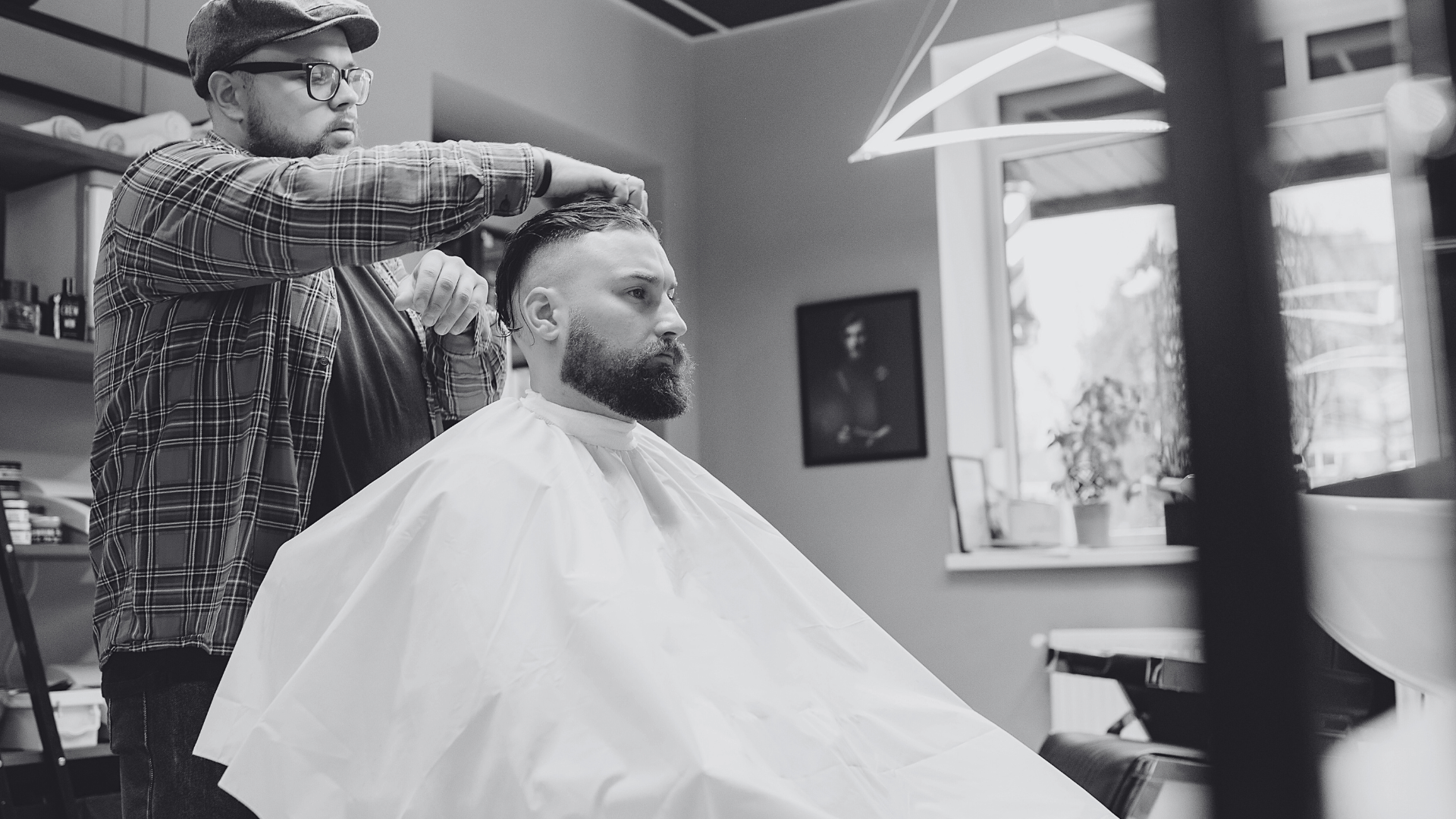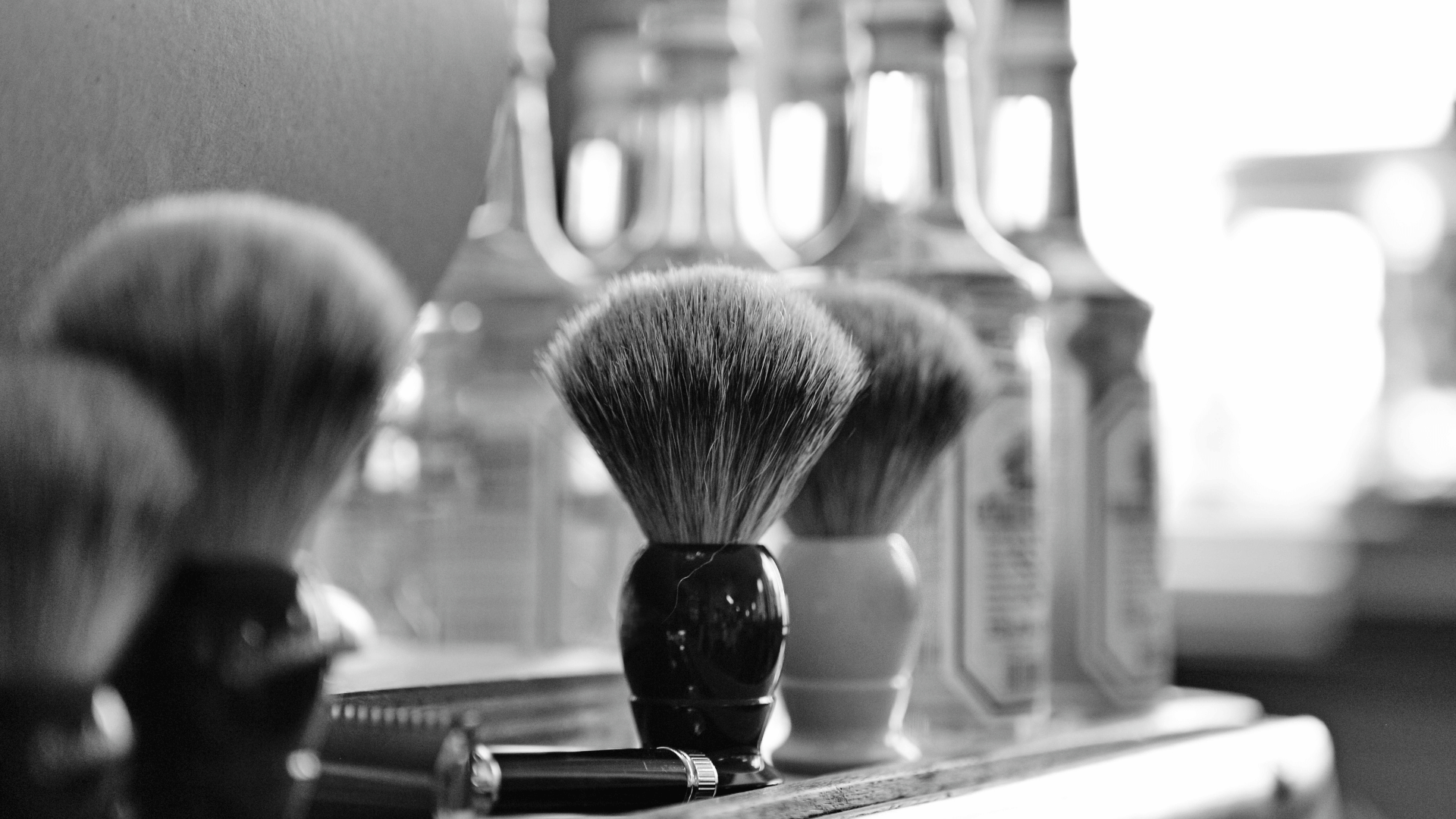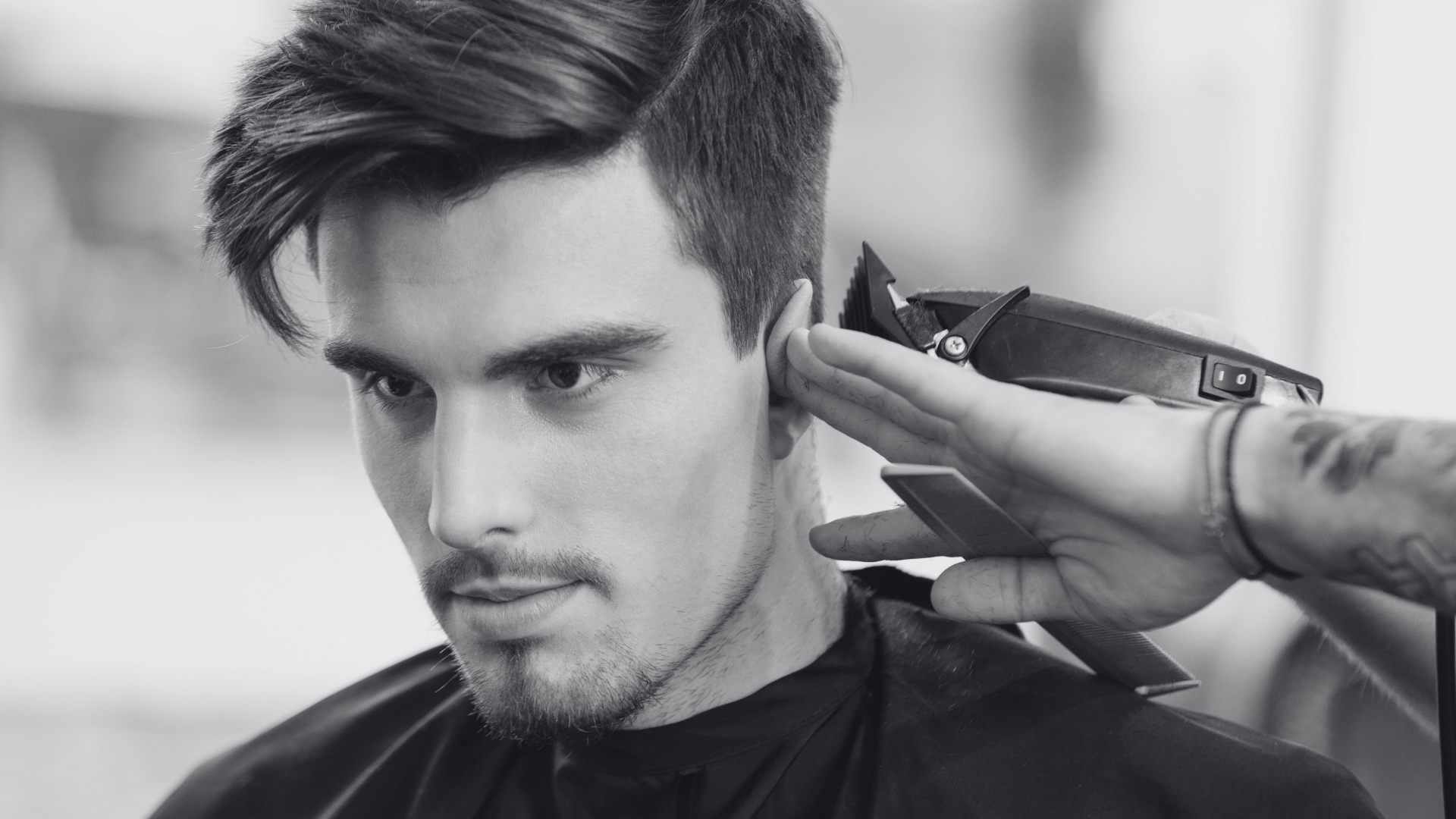Asia’s urban landscape has changed beyond recognition in the past decade. Megacities such as Bangkok, Seoul, Singapore, and Tokyo now pulse with twenty-four-hour fitness studios, co-working lofts, rooftop bars, and “third-space” cafés that blur the lines between hustle and leisure. Men in these environments demand haircuts that transition just as fluidly—from boardroom video calls to midnight Muay Thai sparring, from humid monsoon commutes to air-conditioned art openings.
The rise of athleisure apparel and minimalist grooming has only sharpened that demand: styles must be versatile, low-maintenance, and visually striking in equal measure. Contemporary barbers across Asia have answered with a repertoire of techniques—clipper fades so smooth they appear airbrushed, scissor work that sculpts weightless texture, razor detailing that frames the jaw like calligraphy. What follows is a 360-degree exploration of today’s most influential men’s haircut trends in Asia, the technical craft behind them, and the cultural forces shaping their evolution.
Urban Energy and Cultural Cross-Pollination
Hair trends rarely arise in isolation. They are crosscurrents of music videos streamed on subway rides, NBA highlight reels watched over ramen at midnight, and the hyper-edited glamour of K-drama leading men. In Bangkok you might spot a Korean-inspired two-block cut on a software engineer pedaling a fold-up bike to Asok station. In Shanghai a financial analyst sports a high skin fade with a tight, textured crop—the better to handle gym sessions before sunrise. Jakarta’s surfers lean into flowy mid-length layers that dry quickly in coastal heat, while Tokyo’s creative directors perfect surgical disconnections between clipper-shaved sides and long, razor-feathered tops.
Underlying all of these looks is a single mandate: mobility. Work culture across Asia is increasingly elastic—remote mornings at home, midday client meetings, evening workouts, weekend flights to Bali—and hair must keep pace. Sweat, pollution, sudden downpours, and fickle air conditioning place extra stress on scalp and strands; accordingly, barbers prioritize cuts that air-dry well, withstand helmet friction, and retain shape after a sprint through the BTS or MRT tunnels. Against this backdrop the following techniques have emerged as pillars of modern male grooming.
The Fade Spectrum: From Subtle Taper to Surgical Skin

Fades remain the region’s most requested foundation because they deliver an athletic silhouette and extend the life of a cut. A classic taper fade graduates gradually from temple to nape, preserving a hint of dark shadow around the ears. Barbers achieve this effect with clipper guards #3 through #1, finishing with open-blade clipper-over-comb strokes for seamless blending. In Singapore’s equatorial humidity this moderate taper lets the wearer sweat without feeling exposed, while still projecting office-friendly polish.
For men who crave sharper contrast, the mid-skin fade drops to bare skin above the ear, then arcs gracefully toward the occipital bone. Bangkok barbers often pair this with a textured crop or pompadour; the exposed sides channel heat away on scooter rides between Sukhumvit districts. The tightest variation, the zero-fade or “surgical” skin fade, erases any color gradient: a foil shaver glides against the skin, followed by trimmer cleanup to erase faint stubble. Clippers run at low RPMs to prevent heat spots, and barbers stretch skin horizontally to avoid steps. When maintained every two weeks, the look exudes military precision—a visual shorthand for discipline prized by Hong Kong financiers and Manila CrossFit coaches alike.
Scissor Craft and Weightless Texture
Asia’s diversity in hair density—ranging from coarse, straight Thai strands to fine, wavy Filipino locks—demands scissors as articulate as fountain pens. Point-cutting produces micro-divots along the tip of each hair shaft, breaking up bulk so styles collapse naturally instead of forming matte helmets. Slice-cutting, where shears glide along hair in a single fluid motion, thins interior weight for men who prefer volume at the crown without sides flaring outward in June’s humidity. Japanese stylists perfect “slide shear” techniques that etch airy channels in dense hair; the result is movement with zero mousse required, giving athletes the freedom to towel-dry and go.
Razor cutting has also resurged. Feather razors create frayed ends that soften edges on curtain bangs or K-Pop-inspired fringe, preventing sweat from pooling in heavy chunks during cardio. The razor’s gentle tapering allows thick hair to fan out instead of stacking up, ideal for Seoul summers where styling time competes with long subway commutes.
Two-Block and Curtain Bangs: The Hallyu Wave
No trend has swept Asia with greater force than the two-block cut, fuelled by K-drama heartthrobs and idol groups. Its architecture is simple: clippered sides and back—usually a low taper—contrasted with a longer, layered top that falls into parted curtain bangs. The appeal lies in its dual identity: polished when tucked behind the ears for corporate life, dramatic when tousled across the forehead for nightlife. Maintenance requires strategic undercutting: barbers leave enough length above the occipital bone to preserve shape as hair grows, reducing salon visits for marathon entrepreneurs. Styling craves lightweight sea-salt sprays that add grit without stiffness; men in humid Saigon can revive volume midday with a quick blast of dry shampoo and finger scrunching.
Textured Crop and French Crop: Efficiency Meets Edge
The textured crop, popularized by European footballers, has evolved into an Asian favorite because of its fuss-free charm. Bangkok riders weaving through traffic appreciate how the forward-styled fringe survives helmet removal. Technically, barbers shear the fringe at blunt yet angled points, then overlay a clipper fade for contrast. Finishing touches involve dusting light clay at the roots, scrunching to accentuate separations created during point-cutting. Its cousin, the French crop, keeps the fringe blunt and uniform; Korean barbers often use this to correct receding hairlines by lowering the perceived start of the hairline with precision edging.
Pompadour and Quiff 2.0: Volume Without the Weight
Long considered Western, the pompadour has been re-engineered for Asian climates. Instead of tall, lacquered peaks, modern pomps rely on internal layering and salt sprays. Barbers carve a deep fade or undercut to visually lift the top while removing heat-trapping bulk around the sides. A round brush directs airflow upward during a quick blow-dry, and a matte volumizing powder sets the base. In Taipei’s typhoon season where humidity sabotages alcohol-heavy gels, stylists recommend water-based clays with kaolin to absorb moisture. The quiff, looser and less structured, features disconnected sides that shorten under helmet straps, perfect for e-scooter commutes in Kuala Lumpur.
Buzz, Crew, and Beyond: Streamlined Performance
The buzz cut has transcended military camps to become a statement of minimalist confidence. Thai fighters training at Lumpinee Stadium choose a #2 length across the head, leaving a subtle silhouette that dries before the next round begins. Crew cuts, slightly longer at the front, allow a palm-width of styling flexibility—spike it forward with fiber paste for weekend basketball, comb it sideways with pomade for Monday meetings. Advanced barbers refine these cuts with soft clipper leaps (2–1–0) to avoid mushroom shapes; they angle the clippers against growth direction to minimize dark bands that show through straight Asian hair.
Mullet Revival and the Wolf Cut: Controlled Rebellion
Contrary to the “business in the front, party in the back” cliché, the modern mullet is a study in tapering discipline. Tokyo’s Harajuku stylists fade the temple to the skin, then layer the rear length with razors for a light waterfall effect. Seoul’s variation—the wolf cut—blends shaggy crown layers into elongated nape strands, creating a sporty profile that pairs effortlessly with tracksuits and field jackets. These hybrid cuts honor tradition yet defy conformity, resonating with Gen-Z gamers and skateboarders who value individuality without high maintenance. Styling requires little more than a pea-sized cream, lending rebellious texture while keeping strands off the face during parkour in Bangkok’s old town.
Maintenance, Products, and Scalp Health

A stylish cut is only as resilient as its daily routine. Asia’s active men confront sweat, UV rays, and particulate matter that clog follicles and dull hair. Scalp-focused shampoos with salicylic acid cleanse sebum buildup from early-morning HIIT sessions. Post-workout leave-in tonics containing green tea polyphenols cool the scalp, preventing odor in tropical railway tunnels. Lightweight clays infused with rice starch supply reworkable hold, letting hairstyles recover after a motorcycle helmet flattening. High-gloss pomades are reserved for indoor events where air-conditioning maintains hold without melting under midday sun.
Conditioners adapt to density: fine Chinese strands favor protein-rich formulas that fortify without weight, while thick Indonesian strands rely on shea-based masks that tame frizz. UV-protective leave-ins safeguard color for men experimenting with ash gray or parisian blue highlights, a trend rising among creatives in Shanghai. Regular trims remain non-negotiable; three-week intervals keep fades razor sharp and textured layers from collapsing, which saves time and product.
Technology and the Future Barbershop
Asian barbershops have embraced gadgets that mesh with an always-on clientele. App-based bookings sync with smartwatch calendars; digital consultations use AR mirrors to preview cuts in real time. Precision trimmers feature ceramic blades that stay cool under continuous fades, reducing skin irritation. Professional cordless clippers now offer modular guards with millimeter increments—crucial when distinguishing between a #0.3 and a #0.5 fade demanded by detail-oriented patrons in Japan. For busy executives, express wash-and-cut packages promise runway-ready hair in fifteen minutes flat, leveraging rapid-dry microfibre towels and high-velocity ion blowers.
Cultural Synergy and Personal Identity
Beyond aesthetics these trends speak to identity. Hair becomes a shorthand for ambition, tribe, and mobility. A high-fade faux hawk signals a Muay Thai fighter’s discipline; a two-block cut nods to K-Pop fandom; a minimalist buzz exudes Zen detachment. Asia’s cosmopolitan men leverage these looks to bridge cultures: a Singapore banker switches to a textured crop for his Jakarta secondment, blending seamlessly into that city’s casual-smart code; a Vietnamese designer adopts a razor-shag mullet to echo Ho Chi Minh’s indie music scene while remaining runway-appropriate in Tokyo. The ability to recalibrate hair quickly and convincingly mirrors the region’s shape-shifting careers and social circles.
Crafting the Future of Men’s Hair in Asia
Trendy haircut techniques for men in Asia are no longer defined solely by what’s seen on runways or sports broadcasts. They are forged in co-working hubs, cycling lanes, basement gyms, and late-night ramen stalls. Barbers combine decades-old skill sets—clipper fades, scissor texturizing, razor feathering—with modern technology, sustainable products, and cross-cultural flair. The outcome is a new grooming lexicon that prizes versatility, durability, and intentionality. These cuts must stand up to monsoon downpours, boardroom fluorescents, yoga inversions, and neon-lit street markets—often within the same day. Whether it’s a skin-tight fade paired with a textured fringe, a minimalist buzz that echoes athletic sensibilities, or a wolf cut that straddles rebellion and sophistication, the modern Asian man’s hairstyle is a living statement of how he moves through an accelerating world.
In Bangkok, TWENTY.TWO exemplifies this spirit by translating technical mastery into everyday practicality. Precision fades cool the scalp in humid traffic, weightless texture keeps sweat from collapsing volume during Muay Thai drills, and refined product choices ensure hair reblooms before evening meetings. Here, a haircut is not a static sculpture but a kinetic companion to an active life—evidence that style and performance, tradition and innovation, can and must coexist on the modern masculine head.




